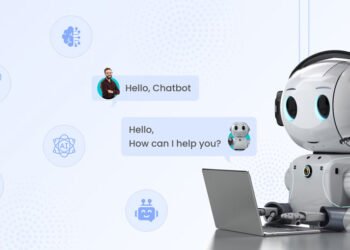With software becoming more complicated and release cycles reducing, you are left with a known dilemma: how do you work faster without quality being compromised? This is where AI comes in – not as a magic bullet, but as a smarter way of identifying risks, eliminating unnecessary work, and making testing decisions based on data rather than intuition. However, it is not as easy as turning on the switch, and that is precisely the reason why it is important to know the background before you introduce AI to your QA stack.
The extent to which AI transforms the nature of testing is underestimated in many teams. Conventional workflows are based on foreseeable scripts and human supervision. In contrast, AI-based testing focuses on pattern recognition, adaptive test suites, and lifelong learning. AI is supposed to relieve the burden of maintaining a big regression suite, in case you have ever felt that it consumes more time than feature writing. However, it also requires good preparation, unbiased data, and understanding where AI can be useful and where human judgment remains a burden.
This article is important since the implementation of AI without the proper attitude may result in a false sense of security or even needless confusion. You will have a clear idea of what to expect next: data requirements, model behavior, team preparation, and the new costs that accompany the rush to adopt AI. You must be aware of what AI will require before you introduce it into your testing process- and what it will return.
Understanding the Fundamentals of AI-Driven Testing
Knowing What AI Can and Cannot Automate
The AI-based testing is strong in identifying patterns, creating test cases, and ensuring that regression suites do not become an uncontrollable mess. It is able to compare changes in code, identify patterns of repetition, and test cases can be maintained with much less human intervention. You will receive more timely test reports and better prioritisation, as well as less unreliable code.
However, AI is not a substitute for human judgment. It still requires precise testing goals, quality standards, and significant supervision. When the expectations are not realistic, then you will be over-reliant on automation that was not programmed to make final decisions regarding quality. Even the most advanced AI integration testing tools depend on the context you provide – business rules, risk boundaries, and edge cases AI can’t intuit on its own.
Understanding Data Requirements and Model Training Needs
Whatever you feed AI models, they learn, and this is the key reason why data quality is a primary concern. The past history of the defects and the history of the user behavior, and the past test results influence the accuracy of the system to predict the threats or come up with the new test cases. Well-organized, uniform inputs assist AI in identifying problematic areas in a precise way; disorganized or incomplete data does not.
Lack of data hygiene may result in biased outcomes, irrelevant testing recommendations, or false assurance in areas that are not really stable. When you are dealing with piecemeal test histories or uneven records, AI models can misread trends or even overlook key behaviors. You must audit your current data sources and make sure that they will give a solid base to model training before moving to AI-based testing. That foundation will be built early to avoid failures in the future and enable proper, reliable automation.
Preparing Teams and Processes for Successful AI Integration
Aligning AI Tools with Existing QA and Dev Workflows
The best way to implement AI is to have it complement the processes that your teams are already relying on. It implies the selection of tools that can be easily integrated into CI/CD pipelines, version control systems, and your existing automation systems. In case integration needs significant restructuring, you will take longer to rework processes than to create value.
Start by identifying where AI delivers the biggest lift. Regression selection, flaky test detection, and predictive risk analysis are often the first areas to benefit from autonomous testing capabilities. These tasks consume significant manual effort and slow feedback loops, making them ideal candidates for AI-driven acceleration. Ensuring technical compatibility early helps you maintain momentum and avoid disruptions across releases.
Skill Readiness and Change Management
The success of any AI-based testing program will be determined by the preparedness of your team. QA engineers should be familiar with the functioning of AI models, the possibility of reviewing the insights generated by AI, and the areas where human judgment is necessary. Upskilling does not involve transforming testers into data scientists, but it does imply that they are provided with the confidence in their ability to interpret automated results.
The adoption process may be put on hold when individuals do not have confidence in the system or believe it is threatening their position. Resistance is facilitated by clear communication of responsibilities coupled with on-the-job training. Demonstrate how AI can decrease the amount of tedious work, but not critical thinking. The more people realize that the technology is making your workflow stronger, rather than restructuring it, the more you will have a healthier adoption curve and will be positioned to succeed in the long term.
Conclusion
Taking a considered approach to AI-based testing requires preparation well before the initial tool is set up. Clean, reliable data is needed, as are processes that can be automated intelligently, and teams that know how to apply AI without losing the human judgment that continues to underpin quality. With such foundations in place, everything you have built becomes much easier to support and much more predictable.
The most notable aspect of this article is that, when integrated into the process, AI makes testing much easier, not out of necessity, but out of desire. You benefit from quicker cycles, more reliable insights, and the capacity to scale up your testing activities without overloading your team. It is a change that pays off in preparation, and the reward when it comes is hard to ignore.












